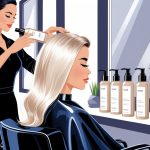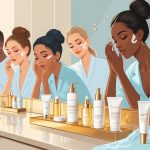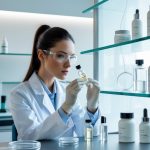New Sunscreen Label Warnings Dermatologists Urge You to Check Now
SPF and Broad-Spectrum Protection
Dermatologist says, “SPF 30 is enough—really though, who even remembers to reapply?” (Dr. Sara, if you’re reading this, I’m still not convinced.) SPF means UVB protection; “broad spectrum” is supposed to cover UVA too, but there’s no real rating for UVA. So, “broad spectrum” could mean anything, honestly.
SPF 50, 70, 100—like that’s going to make me invincible? Most people use way too little, forget to reapply, and UVA rays still sneak through. Unless “broad spectrum” is FDA-approved and independently tested, half these formulas underperform. Even in the derm’s office, I have to check if the “broad-spectrum” claim is current. Formulas change, standards change, nobody tells you. My neighbor (she’s a doctor) grabbed a “broad spectrum” bottle from 2022, not realizing the company changed the formula last year. I mean, who’s keeping up?
Water Resistance and Duration
“Water resistant (80 minutes),” sure, but does anyone actually keep track? I don’t. Labels say reapply after swimming, sweating, towel drying, or every two hours, but the time claims feel random. Water resistance doesn’t equal full protection if you’re swimming laps or sweating buckets.
FDA banned “waterproof” and “sweatproof,” so brands just use “water resistant” and hope you don’t push back. I’ve had sprays rub off in 20 minutes at the pool. Physical blockers (zinc oxide, titanium dioxide) seem to last longer, but lotions work best for real water sports—never wipes. I always bring a stick for my nose and ears because those spots burn first, and no label says “actually safe.” The difference between 40 and 80 minutes? Not small, especially if you’re trying not to fry at the beach.
Understanding Sunscreen Ingredients and Safety
SPF numbers don’t stick in my head—maybe because every bottle screams the same thing, but apparently means something totally different. “Broad spectrum” is everywhere, but nobody I know can actually explain what it guarantees. The ingredient list? That’s where the real drama is.
Physical vs. Chemical Ingredients
Yesterday, I stood in the sunscreen aisle, frozen at “mineral vs chemical,” wishing a pharmacist would just appear and explain. Physical (aka mineral) sunscreens supposedly sit on your skin and bounce UV rays off—zinc oxide and titanium dioxide, mostly. FDA and every derm I’ve grilled say those are safest, especially for babies or sensitive skin.
Chemical sunscreens? The name alone sounds sketchy. They soak into your skin and absorb UV, turning it into heat. Oxybenzone, avobenzone, octinoxate, octocrylene, homosalate—flip over any cheap bottle and you’ll see those. Some people get rashes, breakouts, or that burning-eye thing. Derms say it’s usually the chemicals.
Ingredient Profiles: Zinc Oxide, Titanium Dioxide, Avobenzone, Octocrylene
Zinc oxide is stubborn—it blocks UVA and UVB, but makes you look like a lifeguard from the ‘90s. Titanium dioxide? Gentler, but misses some UVA, so brands mix it with zinc. Avobenzone gets all the attention for UVA blocking, but it falls apart in sunlight unless octocrylene is there to stabilize it.
Octocrylene’s the sidekick, keeps avobenzone working, bumps up SPF, but comes with its own baggage. EWG says chemical combos build up in your body, but honestly, I’ve never met anyone who can explain if that matters. Best advice I got? If you’re swimming, sweating, or glowing white from zinc, double-check if your sunscreen is mineral or chemical—and watch out for “blends.” Good luck.
Which Ingredients Pose Safety Concerns?
Okay, so here’s where I start getting cranky: homosalate? Europe basically says “no thanks” (they cap it super low, so why’s it everywhere here?). Oxybenzone? That’s the one everyone blames for coral death and hormone weirdness—maybe overblown, maybe not, but why risk it? Octinoxate—yeah, Hawaii banned it. That’s not a casual move. It’s not just about reefs, either. CNN’s 2025 sunscreen breakdown? Only about a quarter of formulas make both the “safe” and “effective” lists. That’s…not great.
Dermatologists, bless them, keep warning about irritation or hormone stuff with chemical filters, especially oxybenzone and octinoxate. You’d think we’d get the message. Avobenzone? It’s a drama queen—unstable unless you pair it with octocrylene, but then you get new question marks about possible contaminants. Honestly, mineral sunscreens (zinc oxide, titanium dioxide, the old standbys) are the only ones I trust, even if I end up looking like a ghost. I used to hate the white cast, now I’m just relieved I’m not slathering on a hormone disruptor. Priorities change, I guess.
How To Read a Sunscreen Label Effectively
Ever try to actually read a sunscreen label? Good luck. Numbers everywhere, random seals, “dermatologist recommended” stamped in gold, but what does any of it mean? I’ve met so many people who buy SPF 100 thinking they’re invincible, then forget UVA exists or that “water resistant” isn’t “waterproof.” I get why dermatologists sound like broken records every summer, but honestly, nobody listens.
SPF Numbers and What They Mean
SPF 30, SPF 50—do these numbers mean anything to normal people? CDC says SPF 30 blocks 97% of UVB, but only if you use enough. Who does? I barely remember to reapply once, let alone every two hours. SPF 50? It’s like, what, 1% more? Not a game-changer. I’d rather set a timer and actually reapply than trust some giant number. My friend thinks “SPF 50” means fifty hours of protection (it doesn’t). And, no, sunscreen isn’t the only thing I rely on—I’m bringing hats and sleeves, too. Labels never mention shade, but maybe they should.
Understanding ‘Broad-Spectrum’ Claims
“Broad-spectrum” sounds so official, right? It just means the stuff blocks both UVB and UVA. UVA is the sneaky one that ages your skin (thanks, Instagram filters). There’s no UVA number here in the US, just the “broad-spectrum” stamp from the FDA. If it’s missing, don’t buy it. Simple. But I’ve seen “broad-spectrum” slapped on bottles with barely any UVA filters, especially overseas. So, yeah, it’s confusing. I’ve watched adults squint at ingredient lists, hunting for “bad” chemicals, while missing the giant “broad-spectrum” label. FDA dumped “sunblock” as a word, by the way—it’s all “sunscreen” now. If you see “sunblock,” it’s probably junk.
Certifications and Seals to Look For
Let’s talk seals. Skin Cancer Foundation’s “Seal of Recommendation” feels official, but does anyone actually check what it means? They want broad-spectrum, reliable SPF, and real-world staying power, but my relatives keep buying knockoff brands with fake seals. FDA doesn’t have a real stamp, so you’re stuck looking for:
- Skin Cancer Foundation Seal of Recommendation
- American Academy of Dermatology endorsement (rare unicorn, but grab it if you spot it)
- “Water-Resistant 40 or 80 Minutes”—they literally test this on wet arms, not just lazy pool floats
Brands invent their own seals all the time. I wish my cousin would care, but he grabs “Sport” SPF and never checks if it’s water-resistant. You have to dig for real seals, ignore the fake ones, and maybe triple-check online. Even big brands relabel stuff without warning. It’s a mess.



